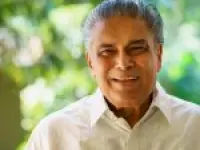
BJP Revamps MADHAV Formula, To Win Over OBC Vote Bank (image:x.com/BJP4India)
The caste factor is going to play a significant role in the upcoming Maharashtra elections. As Maratha reservation demand gains new momentum under the helm of Manoj Jarange-Patil, discontentment from OBCs is raising against the government for yielding to the Maratha agitation. Meanwhile, along with consolidating Maratha votes by Mahavikas Aghadi (MVA), the Congress, one of its alliance partner, is attempting to align Dalits, Muslims, and Kunbis (DMK) axis as well. In such a precarious political climate, the BJP is returning to their erstwhile MADHAV formula as a poll strategy.
Also Read | The Jarange Factor And Maratha Community Votes
The Marathi acronym MADHAV stands for Mali (gardener), Dhangar (shepherd), and Vanjari (a nomadic or semi-nomadic group from Marathwada). The three castes fall under three major OBC communities in the state with sizeable populations. Through this social engineering formula, the saffron party is attempting to resist Maratha community backlash, and Jarange-Patil‘s anti-BJP stance likely to impact their prospects. In Marathwada, Western Maharashtra, North Maharashtra-Khandesh, Mumbai-Konkan, and Vidarbha regions, these caste combinations and groupings have a decisive role to influence electoral outcome since the subject of reservation has resulted in Maratha-OBC polarisation in the State. There is an opinion among the BJP functionaries that the party lost its grip among several OBC caste groups due to ambiguity from the government over the Maratha reservation issue, which resulted in their distance.
The MADHAV formula was introduced for the first time in the 1990s by RSS ideologue Vasantrao Bhagwat. In the beginning, the saffron party was known mainly as an upper caste party, limited to Brahmins and Baniyas. Meanwhile, in Maharashtra politics, Congress maintained an influential position with the support of Marathas, Kunbis, Dalits, Muslims, and tribal people. It was at this time that Bhagawat helmed party affairs to advance its influence statewide. For this, he came up with the MADHAV strategy, a consolidation of non-Maratha, smaller caste groups that did not find political representation in the grand old party. Since it was also the time of the Mandal Commission, the small communities were also seeking to gain OBC status. Bhagat tactfully focused on the Malis, Dhangars, and Vanjaris, and his strategy worked. The first generation BJP leaders in the state, N.S. Farande, Anna Dange, and Gopinath Munde, are the product of the MADHAVA axis. The move helped the BJP to expand its hold among the Bahujan community as well.
The BJP revived the MADHAV formula at times when the party is facing a crisis at the electoral front. The current Maharashtra political climate also urges a return considering the setback Mahayuti received in the Lok Sabha polls conducted early this year. In the polls, the BJP wiped out from eight Lok Sabha seats in Marathawada due to Maratha anger and Dalit-Muslim consolidation. Since the Maratha community could influence the electoral destiny of nearly 150 assembly seats, the BJP could not neglect Maratha votes entirely. To attain this, the party has been bringing Maratha leaders such as Nitesh Rane and Pravin Darekar, to raise right-wing Hindutva issues so as to appeal to religious sentiments, and also it is employing its alliance partners, who are Marathas, to campaign in constituencies where a Maratha candidate is contesting, the Frontline reports.
Also Read | Can Prashant Thakur Secure Fourth Term Beating Balaram Patil In Panvel?
However, there are observations that the MADHAVA formula might not secure the expected results this time since Dalits, tribal people, and Muslims are anti-BJP this time. If the consolidation of the Maratha-Muslim-Dalit–Tribes vote bank takes place, the BJP’s efforts will end in futility. The results will tell how the tried-and-tested social engineering formula by the BJP fared for Mahayuti.













